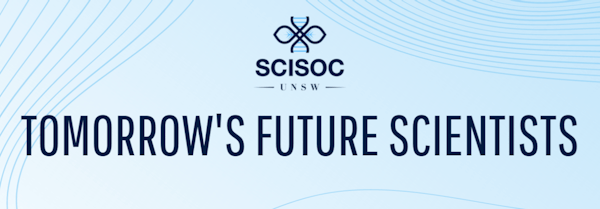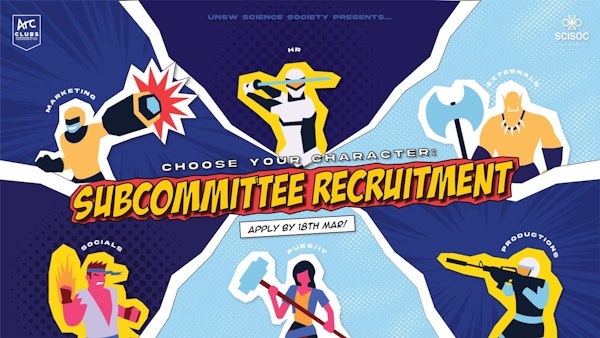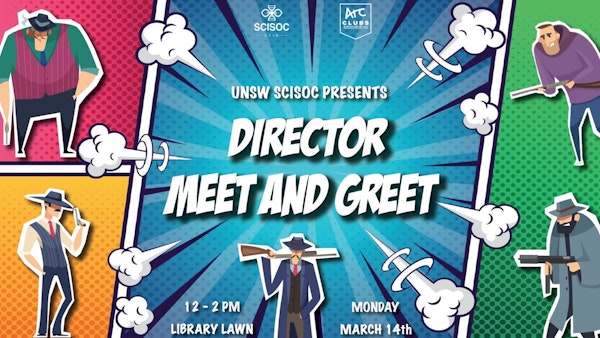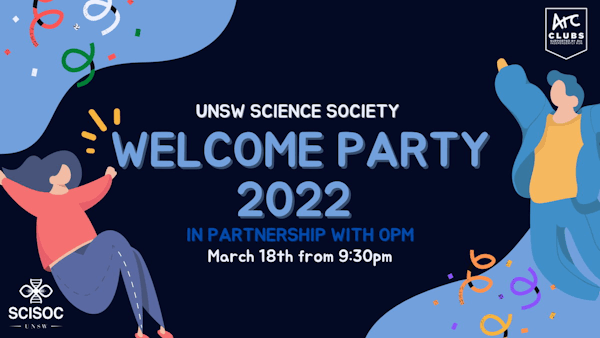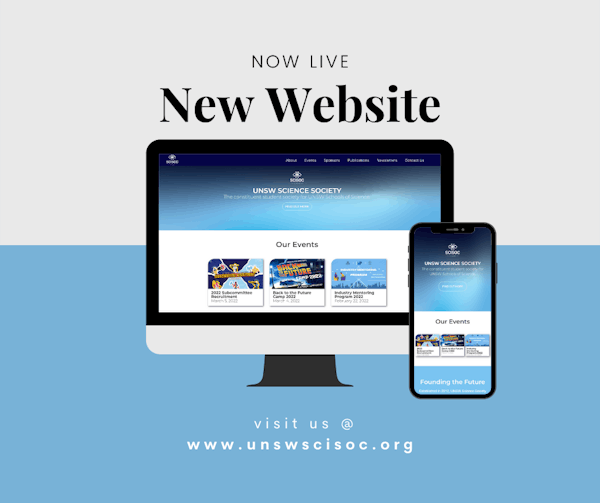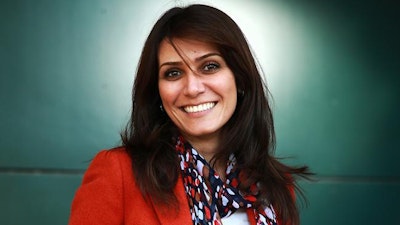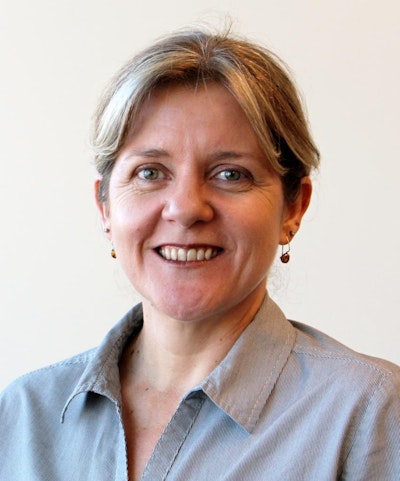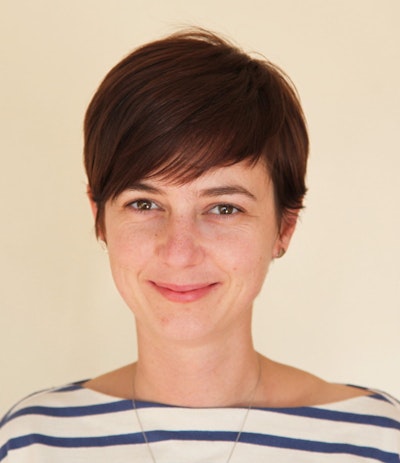Welcome back to PRISM, the SCISOC newsletter! In this fortnight's newsletter, we present to you our 2022 Subcommittee Recruitment Drive, an opportunity to meet our directors at our Director Meet and Greet tomorrow, an exciting collab with OPM for a Welcome Party, and our newly revamped SCISOC Website! In our Science News, in light of International Women's Day this past week, we delve into the significant findings made by female Australian scientists. Finally, in our Fun Corner, we debunk common sleep myths so that you can have a good night's sleep! |
|
|
SCISOC 2022 Subcommittee Recruitment If you're looking for a great opportunity to develop valuable skills and learn how to effectively collaborate within a team environment with other SCISOC subcommittees and committee members, here is your chance! With 6 different portfolios that specialise in different areas, find what interests you the most and apply as this is something you truly don't want to miss out on. When: 5th March - 18th March 11:59 PM Where: Apply Here! |
|
|
SCISOC Director Meet and Greet Interested in applying for the SCISOC subcommittee? Want to know more about the portfolio you're interested in? Stop by the Library Lawn on the 14th of March to meet our directors of all of the portfolios to get a better grasp on what each portfolio has to offer and get to know the directors better! Even if you're not interested in applying for SCISOC's subcommittee, feel free to stop by and learn more about what opportunities SCISOC will be offering such as upskilling and social events in the near future. When: 14th March 12 - 2 PM Where: UNSW Library Lawn |
|
|
UNSW SCISOC x OPM Presents: Welcome Party 2022 SCISOC x OPM is inviting you to have a taste of an amazing night, giving yourself a well-deserved break from all that hard work you've been putting in these past few weeks. Whether you've been trying to catch up on 3 weeks of lectures or you've been up-to-date since week 1, it's time to get a little loose and come for a great opportunity to not only have fun but meet new people! When: 18th March 9PM - 2 AM Where: Marquee Sydney |
|
|
SCISOC's New Website! With a great, consistent effort by the Marketing and IT/Publications portfolio, we proudly present to you the new and refreshed SCISOC website! Come and take a look at our fresh new website and what it has to offer. If you're planning to bring ideas to life like this, we strongly encourage you to apply for the IT/Pubs subcommittee! |
|
|
In light of International Women’s Day last week, IT/Publications brings to you a Scientists Spotlight to recognise and celebrate some of Australia’s most impactful female scientists! |
|
|
Dr Dharmica Mistry is the co-founder and ex-Chief Scientist of BCAL Diagnostics, who, while trying to draw associations between hair and breast cancer, discovered lipids linked to breast cancer. As a result, Breast-Cancer Associated Lipids (BCAL) Diagnostics, were able to produce an affordable, non-invasive, and accurate method to diagnose the cancer. Since 2008, Dharmica had worked as a lab technician for an Australian start-up company who were looking into the relationship between hair and breast cancer, even using her own hair as a negative control. |
| |
|
After she graduated from university, she and Peter French founded BCAL Diagnostics. Their tests are 90% accurate and have the potential to detect other kinds of cancer on top of breast cancer. Mistry won the Australian Financial Review BOSS Young Executive of the Year in 2016 as well as the People’s Choice Award in the Australian Technologies Competition in 2017, and proves an inspiration to us all. |
|
|
| Naslim Amiralian won the Queensland Women in STEM award for her work in improving latex. She took over the Judge’s Choice award for her discovery of quique and high-quality nanofibers (cellulose nanofibers) in spinifex grass, a common plant around Australia. She then found a cost-effective and eco-friendly solution to easily isolate those nanofibers. Her work laid the groundwork for developing more sustainable, stronger materials, like carbon fibre, but a much cheaper and renewable alternative to produce. |
|
|
Amirilian's game-changer discovery in the world of nanocellulose-based manufacturing led to the establishment of Australia’s first nanocellulose production plant. She also maximized Australia’s natural resources and created jobs across the industry that supported Indigeous Australians by providing opportunities for education and training. |
|
|
Marguerite Evans-Galea is known for her research to develop cells and gene therapies and identify therapeutic targets for Friedreich ataxia, a neurodegenerative disease that commonly leads to years of severe disability. She led international collaborations to understand disease mechanisms and develop novel therapies and biomarket for repeat-associated neurodegenerative diseases. In 2008, she joined a team at the Murdoch Childrens Research Institute. From there, she started developing treatments and therapies for young kids afflicted with Friedreich’s ataxia. She received Young Investigator Awards for the Friedreich Ataxia Research Alliance, USA and the Australiasian Gene and Cell Therapy Society. |
| |
|
Outside of Dr Evans-Galea’s research, she co-founded and is CEO of Women in STEMM Australia (formerly known as Women in Science Australia), an organisation that provides opportunities for women working in the field as well as aims to raise awareness on issues faced by women in STEM. |
|
|
| Dr Belinda Lidell of our very own UNSW’s School of Psychology has conducted extensive study into aligning neuroscience and human rights to understand the effects of refugee trauma, displacement, settlement, and recovery. Her analysis of cross-cultural differences has been critical in the development of legislation and policies to aid in the settlement and recovery of refugees overall. Her work has led to more evidence-based treatments for the refugee and asylum seeker population, as well as advocating for more awareness on the impacts of torture, conflict, and terror on the human mind. |
|
|
She was awarded the H. Tasman Lovell Medallion, as well as the Churchill Fellowship in 2014 to investigate links between clinical research and survivor of torture and human rights policy. This intersection of science and social impact characterises Dr Belinda and her standing in the scientific community, proving a role model and pioneer for every one of us. |
|
|
Debunking Myths about Sleep
Sleep science has drastically improved over the last twenty or so years, providing new insight om how sleep works, why it's important and the things that can disrupt a good night’s rest. Despite this, there is still a great deal of misinformation that surrounds sleep that is spread online, on social media or word of mouth. Worry not! We are here to dispel some of these lies and hopefully give some helpful tips that you can use to get some better sleepy time. |
|
|
Myth 1: “Your body gets used to getting less sleep”
A group of experts commissioned by the National Sleep Foundation state that adults should get between seven and nine hours of sleep per night. While a very small number of people - around one in four million - possess a genetic mutation that allows them to naturally sleep for shorter periods and still wake up refreshed. Odds are that these are not you because these individuals are the rare exception so getting older is not an excuse for sleep deprivation! |
| |
|
Myth 2: “Snoring isn’t harmful and you can’t do anything about it anyway” While having light occasional snoring isn't usually a problem, loud and frequent snoring is often a cause for concern. Chronic or loud snoring may be caused by obstructive sleep apnea (OSA), a serious breathing disorder that fragments sleep and prevents a person from taking in oxygen that their body needs. Various methods can be used to address snoring depending on the cause such as:
Positive airway pressure devices that keep the airway open can treat OSA
Anti-snoring mouthpieces and mouth exercises can help many people reduce or eliminate snoring and in many cases, losing weight can cut down on snoring as well. |
|
|
Myth 3: “Naps during the day are bad for you” While a short nap isn't a replacement for a good night's sleep, it might help you feel more energised. Because our bodies naturally lose energy in the early afternoon, resting around that time may be more natural than forcing yourself to stay awake until the evening. Afternoon naps can boost "subjective and behavioural improvements" as well as mood. People who nap do better in activities like "addition and logical reasoning and response time" according to the scientists. However, naps during the day cannot replace quality sleep at night since they do not include passing through the phases of sleep in the same manner as sleeping at night.
|
| |
|
Myth 4: “Alcohol Before Bed Improves Sleep”
Have you ever heard your mate say “Nws bro, I’m gonna have the best sleep ever and I’ll wake up refreshed,” when they’re 15 standards into a night out?
Sure, a few drinks can cause drowsiness that makes it easier to fall asleep, however, the issue is that after consuming alcohol, the quality of sleep suffers significantly because liver enzymes metabolize alcohol. Alcohol consumption before bedtime can disrupt sleep cycles, increase the likelihood of sleep interruptions, and aggravate snoring and sleep apnea. In addition, drinking to fall asleep builds a tolerance, requiring you to consume more alcohol each night to have the same sedative effects, leading you to be unhealthily dependent on alcohol. We hope we’ve debunked some of these sleep myths for you and take these to have better sleep hygiene throughout the term! |
|
|
UNSW Science Society is proud to announce our continued partnership with GradReady through 2022. GradReady provides GAMSAT Preparation courses for anyone looking to pursue Medicine after they graduate.
This process starts earlier than you think, so if you’re studying medical science or just have that passion, check out what they have to offer! |
|
|
| |
